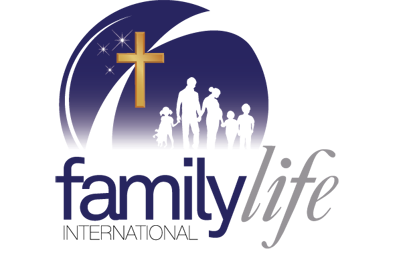Written by Kathy Clubb
The concept of ‘listening’ is very much a part of the post-Vatican lexicon and has been a particular focus during the initial stages of Australia’s Plenary Council. However, it has been disturbing to say the least, to see ‘Deep Listening’ – a term which may escape the notice of the casual observer – creeping into the Plenary’s vocabulary and into the wider Church in recent years. Deep listening, like meditation, is one of those practices which sounds quite harmless and helpful but which on closer inspection can be identified as a dangerous occult practice.
It’s worth noting here that listening itself is a very important part of our human nature and is necessary for developing a relationship with God. The Second Person of the Trinity is the Logos, the Word to Whom God the Father tells us to listen, so this activity is rooted in our very response to God. Listening is a vital part of the process of discerning God’s Will for us.
On the human level, listening shows empathy, builds trust and produces well-being.[1] Many, if not most, of those within the Church who promote the idea of Deep Listening, would be completely unaware that it is anything other than the ordinary kind of listening that humility and charity oblige us to practice.
New Age Concept
Some counsellors would define deep listening along the lines of being: “… the practice of open inquiry, without assumption or judgement.”[2] However, one counsellor of 25 years’ experience explained that the practise of ‘open enquiry’ is what is usually termed, ‘active listening’ and has never seen the terms ‘deep’ and ‘active’ being used interchangeably.
Thus deep listening is something other than a technique for improving communication skills. It has emerged as an independent therapy, akin to mindfulness and is rarely described without some reference to meditation, emptying oneself in some way or being attentive to occult or hidden meanings.
Deep listening is sometimes used as an aid to receiving knowledge from so-called “spirit-guides”[3], but more often it involves searching for one’s inner compass or allowing one’s hidden memories to resurface. Deep listening is said to reveal the unconscious mind or to tap into a higher consciousness.[4]
One practitioner of Deep Listening explains that the listener must be full of trust, which “does not imply agreement, but the trust that whatever others say, regardless of how well or poorly it is said, comes from something true in their experience.”[5] (emphasis added.) Here we see the first glimpses of Deep Listening’s relativistic roots and also its Immanent heritage: if the Divine dwells within each person, then all have the truth hidden away in their souls.
This therapist contrasts Deep Listening with active listening, saying that the former throws light on “what purpose, interest, or need is motivating their (the speaker’s) speech” and that it is necessary to listen to what is “between the lines.” Other proponents tend to conflate the two techniques, something that makes it easy to overlook Deep Listening as a red flag for error.
Another practitioner explains how Deep Listening is used as a therapy among New Age counsellors. She describes the process as a way to “discover our truth, our meaning, our purpose, our action”[6]. This facilitator is a ‘sacred activist’ who uses the media of “drawing, stream of consciousness writing, free movement and embodied listening practices” to express the emotions which will be released via deep listening sessions.
Dadirri and Kulili
Indigenous Australians have their own version of deep listening, called dadirri. Dadirri is an approach that involves “tapping into the deep spring” that Aboriginals believe exists within each person. Miriam-Rose Ungunmerr-Bauman, an Aboriginal from the Daly River region, believes that didirri is a source of peace and unity with the land. She has promoted the practice, and legitimised it among Catholics by drawing elements of Christianity into her explanation.
“There are deep springs within each of us. Within this deep spring, which is the very Spirit of God, is a sound. The sound of Deep calling to Deep. The sound is the word of God – Jesus.”[7]
Jesuit priest, Frank Brennan, has long promoted Aboriginal spirituality, particularly the technique of Dadirri. In 1997, he co-wrote a paper with the Miriam Rose, called Reverencing the Earth in the Australian Dreaming. The paper was published as a book chapter and included a section dedicated to Dadirri. In it, the authors state:
“Dadirri recognizes the deep spring that is inside us. We call on it and it calls to us. This is the gift that the world is thirsting for. It is something like what others call ‘contemplation’. When I experience dadirri, I am made whole again.”[8]
The concept of Dadirri crosses the line from experiencing the presence of God during quiet prayer, which is of course standard Christian practice and quite legitimate, to attributing sanctification to the process of Dadirri itself, which is sacrilegious.
The term is related to another Aboriginal word: Kulila, which means ‘to listen’. Jesuit Fr Brian McCoy suggests that contemporary Catholics need to employ kulila to imitate indigenous Australians who listened to the “wisdom of the elders”. This is apparently facilitated by the action of sitting, which, Fr. McCoy claims, “grounds us.” Fr McCoy applies the process of kulila to Plenary 2020 and asks if Catholics “… can be audacious enough to grasp issues around clericalism and lay governance.”[9]
Pauline Oliveros
The practice of Deep Listening was pioneered in the West by Pauline Oliveros, who was also a ‘priestess’ of the Ministry of Maat[10], that is, a witch from a group named after an ancient Egyptian deity. (Since 2016, Oliveros died, the Ministry claims she serves on its “Spirit Board.” Quite humorous until you realise that this group is very serious about communing with the spirit world.) Oliveros also espoused the ritual of “spell-breaking” which is a form of voodoo that originated within Nigeria’s Yoruba tribe[11].
Oliveros described Deep Listening as a form of meditation designed to facilitate art and life, in which “New fields of thought can be opened and the individual may be expanded and find opportunity to connect in new ways to communities of interest.” She continued,, “The practice is intended to expand consciousness to the whole space/time continuum of sound/silences.”[12] According to Pauline Oliveros, Deep Listening is no harmless communication technique but is intrinsically connected with meditation and altered consciousness.
Oliveros also claimed that Deep Listening can be used to access hidden memories:
“Consciousness is acting with awareness, presence and memory. What is learned is retained and retrievable. Information, knowledge of events, feelings and experiences can be brought forward from the past to the present. In this way one has self recognition.”
Although Oliveros differentiates her theory from that of Zen Buddhist monk Thich Nhat Hanh, for whom Deep Listening is one of “Five Mindfulness Trainings”, there is little difference in the effect being sought. Both are forms of meditation which are intended to alter consciousness and somehow relieve suffering.
Deep Listening and Witchcraft
Deep listening has such integral ties with the occult that it has become part of modern witchcraft, particularly among animistic witches. One workshop on Natural Magic in the UK included sessions in deep listening, rubbing shoulders with sacred geometry and Alaistair Crowley’s thelema.[13]
When used in witchcraft, the technique of tapping into one’s “inner self” moves from healing or retrieving memories to the area of connecting with spirits and discovering occult knowledge. This aspect can also be found in Dadirri; for example, an indigenous counsellor says that for her, deep listening is a way of “tapping into her ancestors, constantly listening to spirits.”[14]
The practise of deep listening is sometimes included in ‘embodied magical activism’. This kind of activism is usually aimed at reclaiming the earth from the effects of climate change but can also be used to attempt to overthrow systems of injustice, such as ‘the patriarchy’, and has been widely employed in an attempt to derail the Trump presidency.
Deep Listening and False Memory
One application of deep listening is in the area of psychological suggestion. This is particularly concerning, as therapists can potentially implant false memories in a client who is in the meditative state of deep listening.
Dr Elizabeth Loftus is one of the world’s foremost authorities in the area of false or implanted memories. Dr Loftus differs from many of her colleagues in that she does not believe that memories of trauma can be repressed. She has stated that some of the modalities which tend to produce false memories include “guided imagination, dream interpretation, hypnosis and direct confrontation based on other people’s memories.”[15] As mentioned above, deep listening techniques are often associated with dream interpretation and hypnosis and depending on the setting, may also be associated with guided imagination.
Dr Loftus claims that “beliefs [about oneself] begin to feel like recollections, to feel like memories. If the beliefs are false then the memories are false.”
Given the close connection between hypnosis, meditation states and shamanism, [16]it is reasonable to suggest that false memories can be implanted during deep listening and that this may be made even more potent by the diabolical influence present in these situations.
False memories of sexual abuse have led to hundreds of people being wrongly convicted in some jurisdictions[17]. One particularly disturbing can occurred in Italy, where a network of social workers, doctors and psychologists deliberately brainwashed dozens of children into believing that their parents had sexually abused them. The children were then sold on to waiting foster parents – some of whom actually did abuse the children.[18]
Deep Listening and Plenary 2020
There are multiple references to Deep Listening, Dadirri and its associated ‘yarning circles’ in Plenary articles, submissions and even recommendations. As mentioned above, it is probable that most of the people who made these references do not understand the true, dark nature of Deep Listening.
Here are just a few examples:
- Plenary activists mention the practice (such as here[19] or here[20] or here[21])
- An Archbishop mentions it here[22]
- Dadirri is entwined with preparations for the Plenary such as here[23]
- a representative of a group with members who are Dadirri practitioners joins the Plenary Council Executive Committee as shown here[24]
- Yarning Circles are referenced here[25]
- And recommended by Plenary organisers here[26]
A little research into Deep Listening’s connections with the occult only serves to increase misgivings about the Plenary Council and we may well ask exactly which ‘Spirit’ is behind this latest attempt to deCatholicise the Catholic Church?









